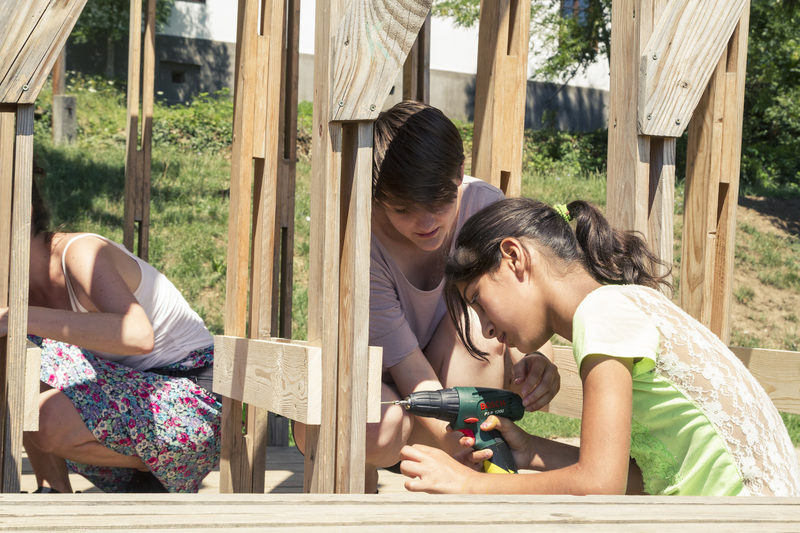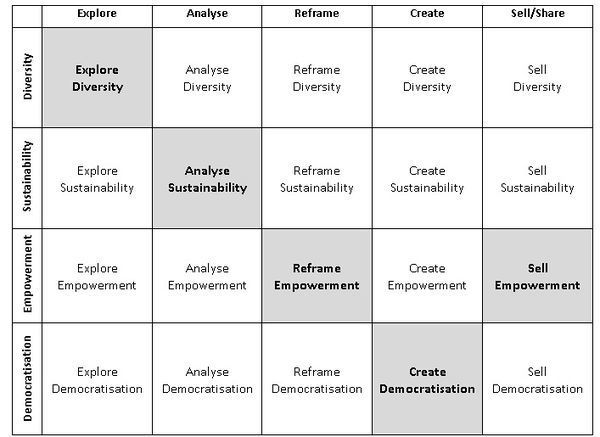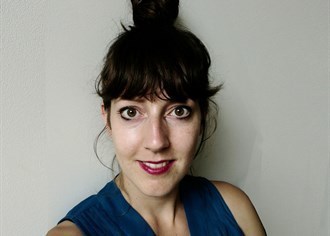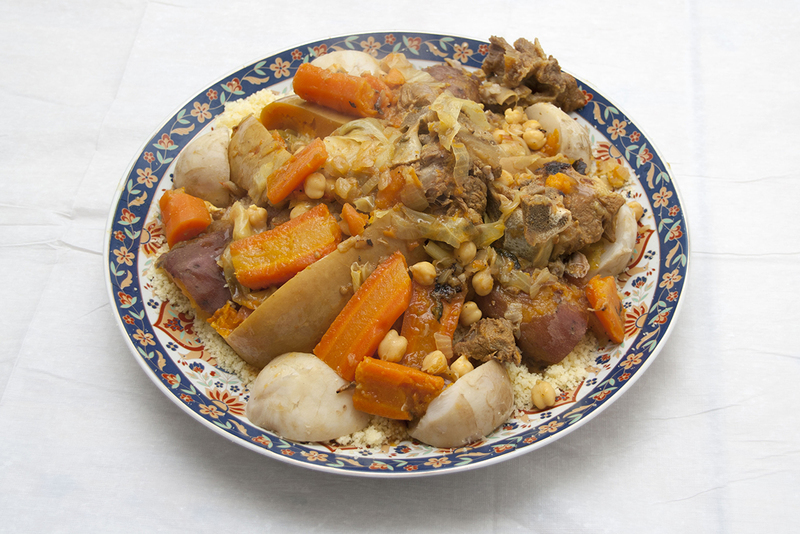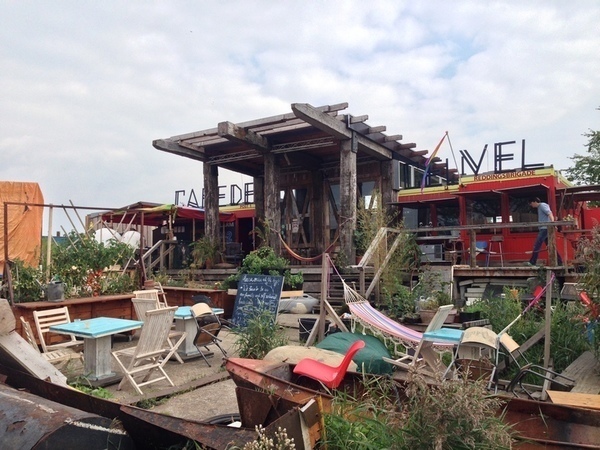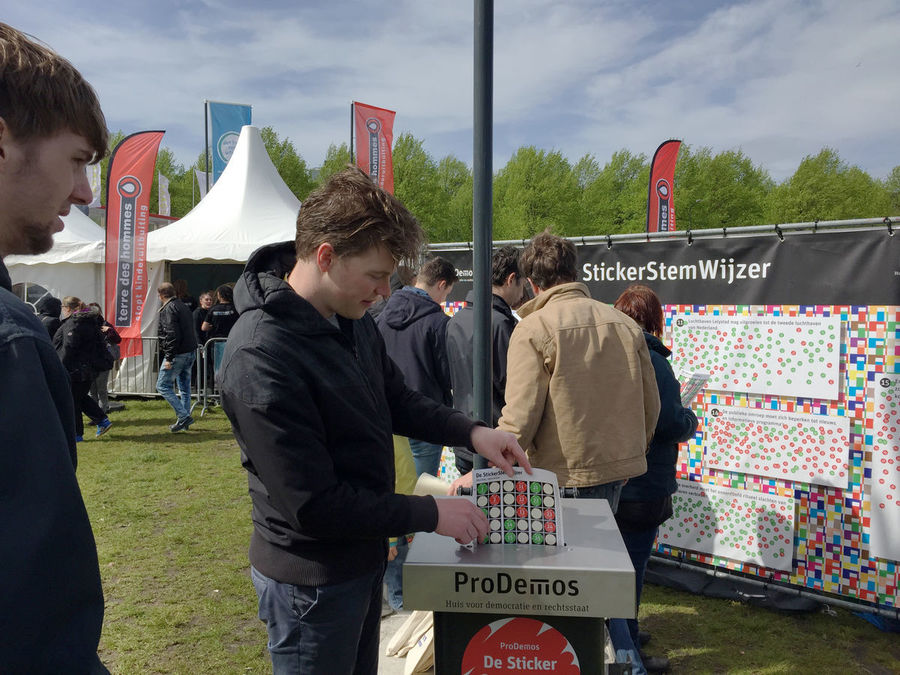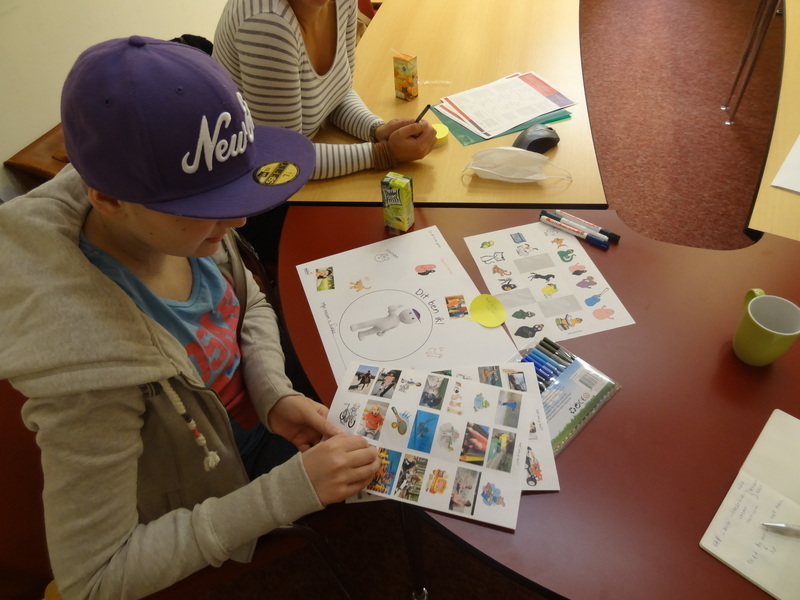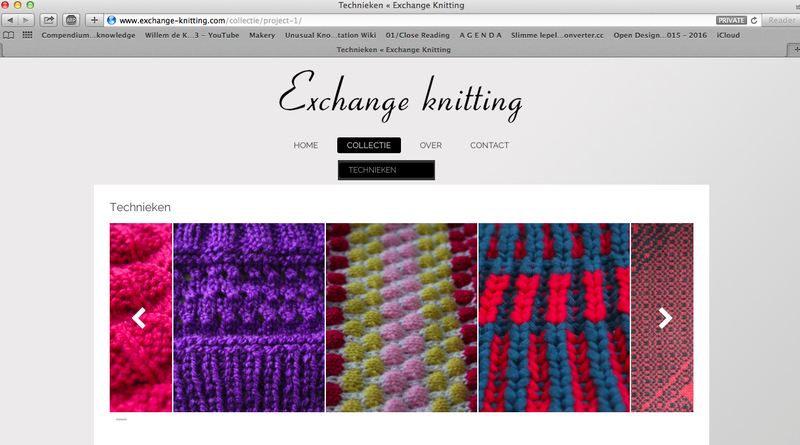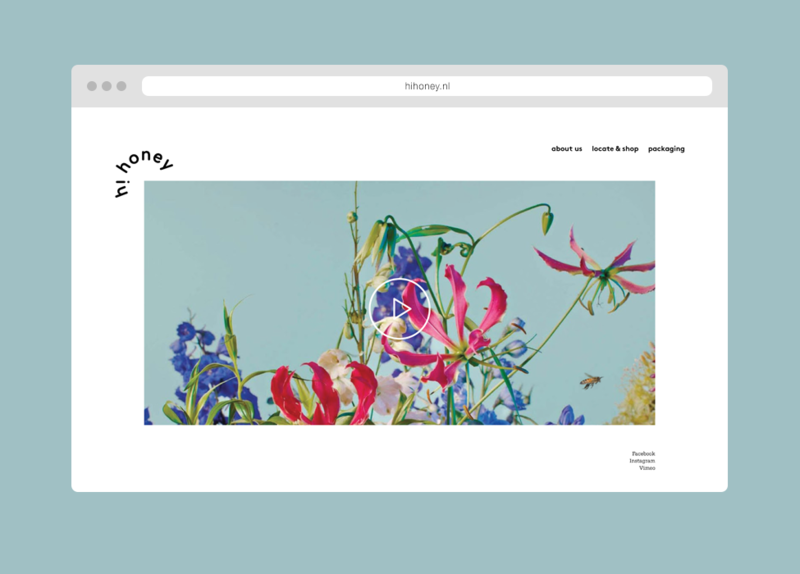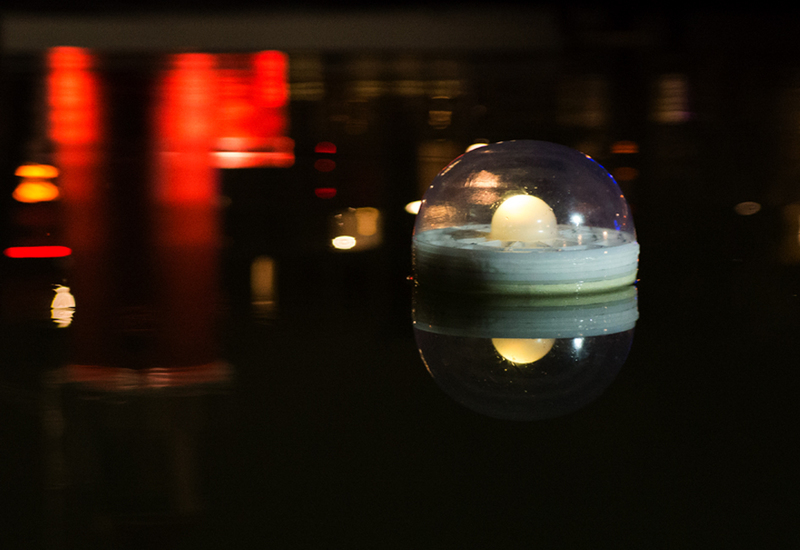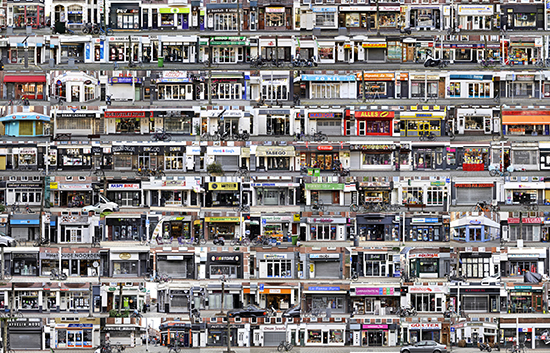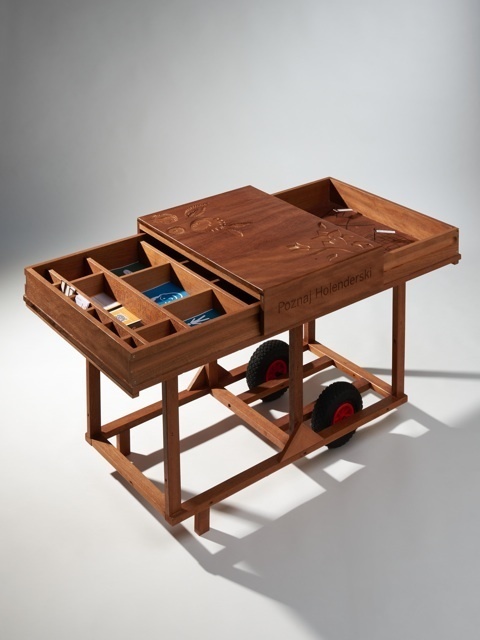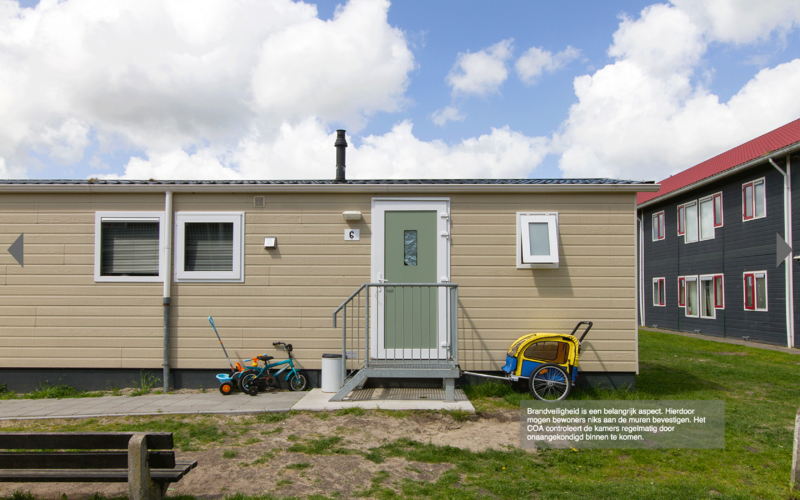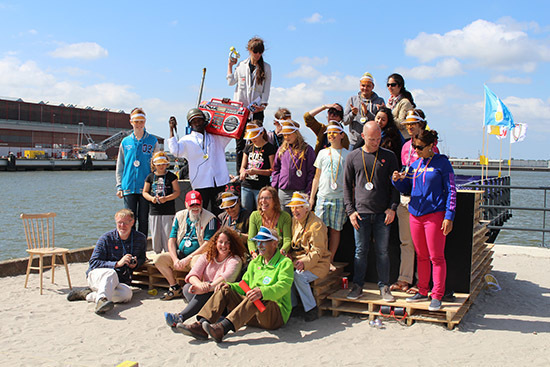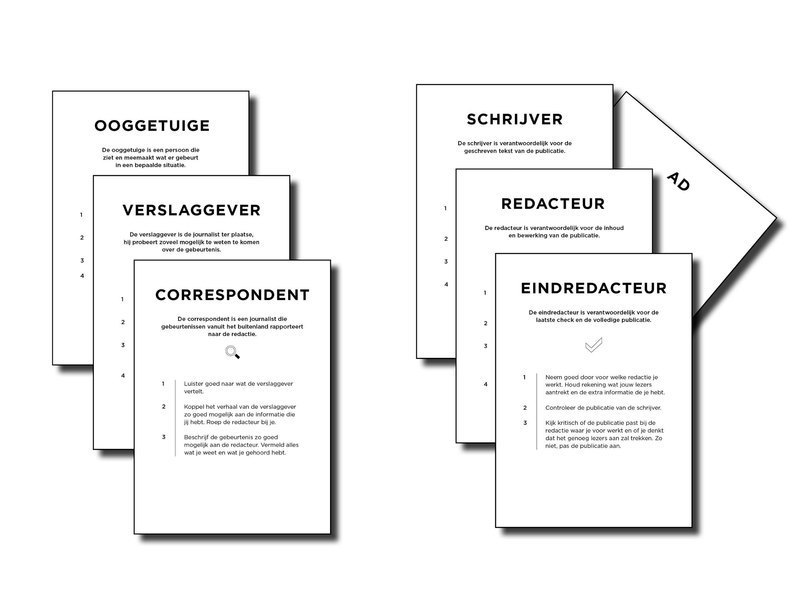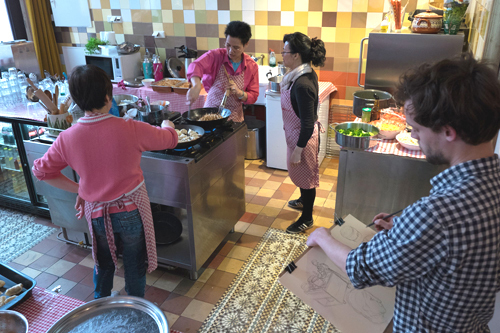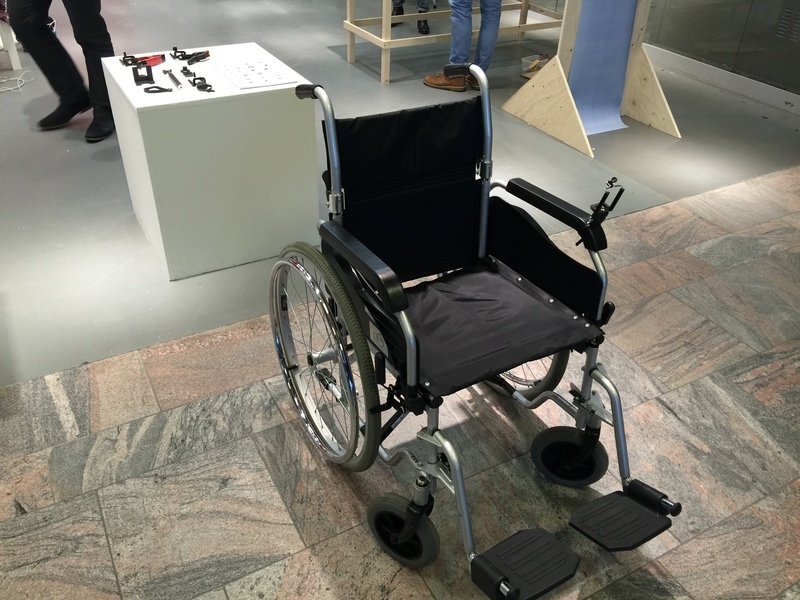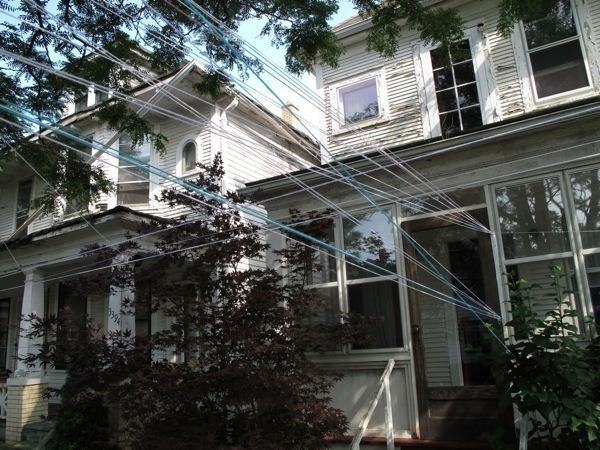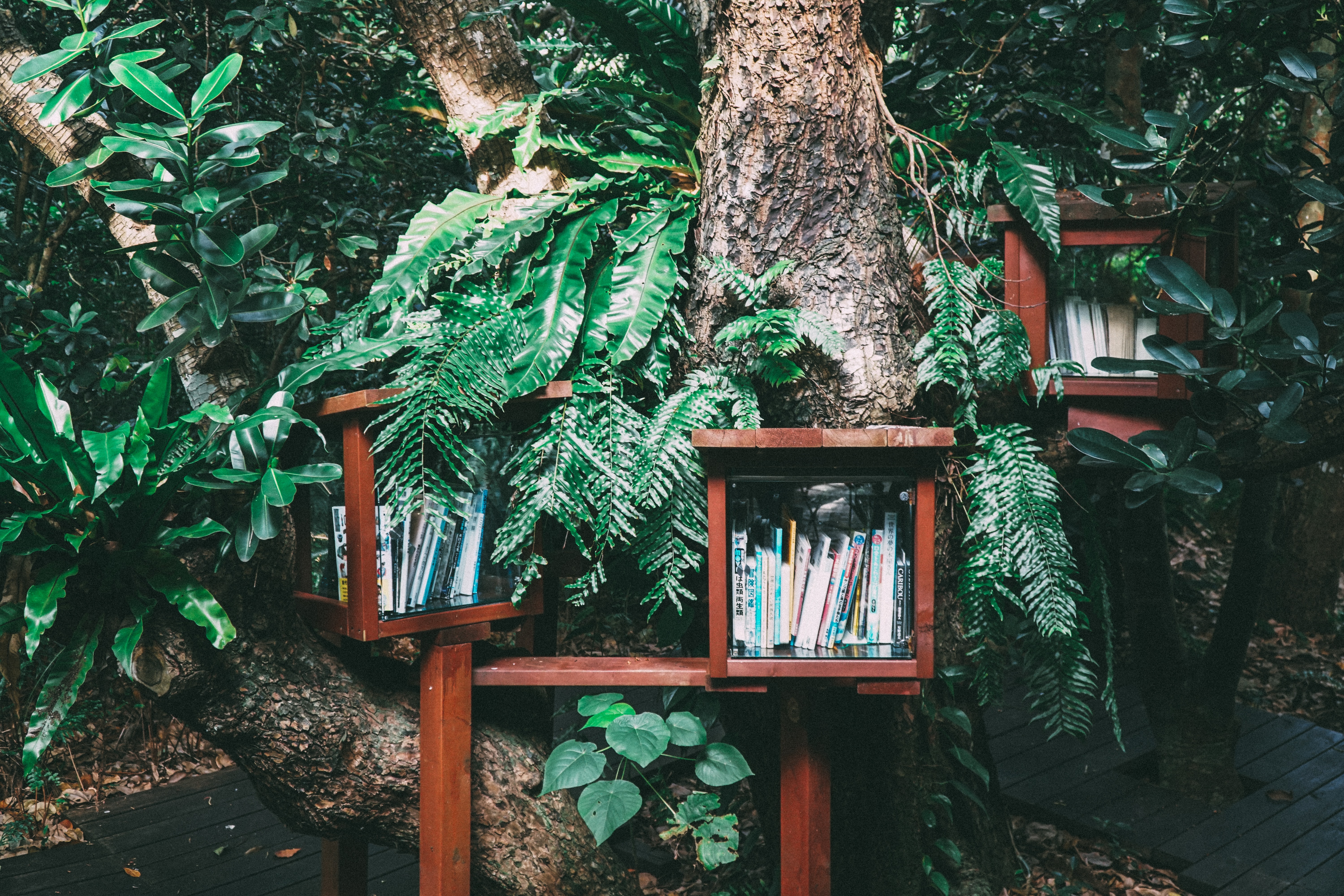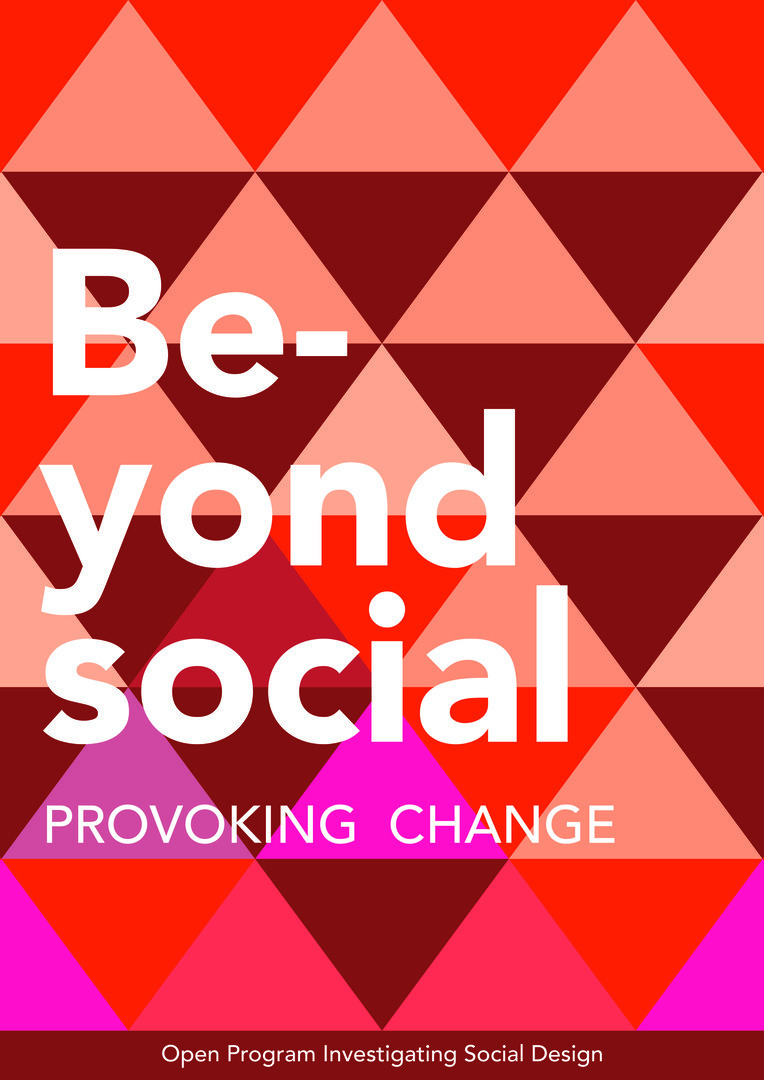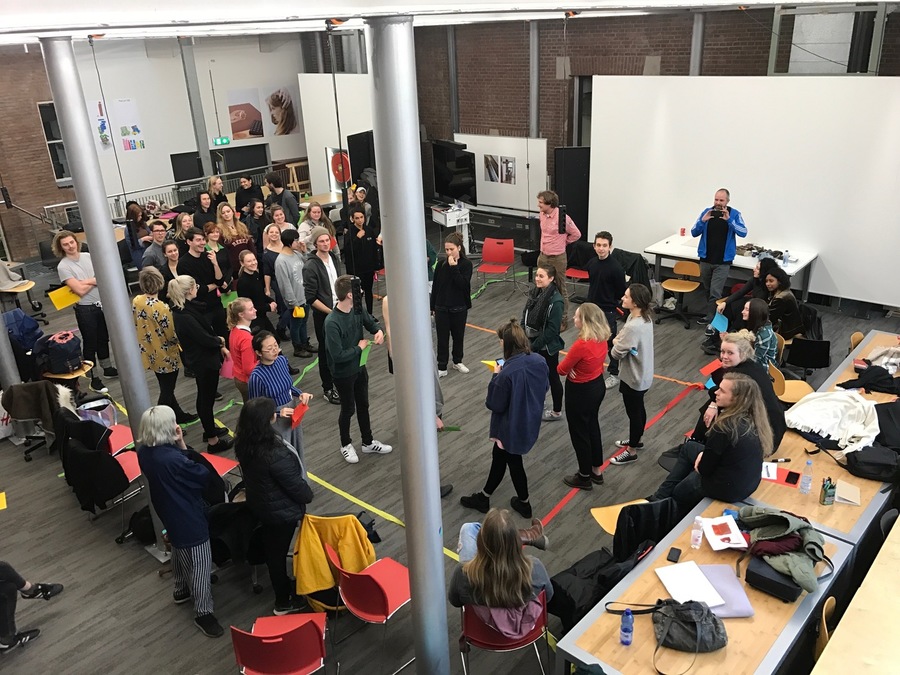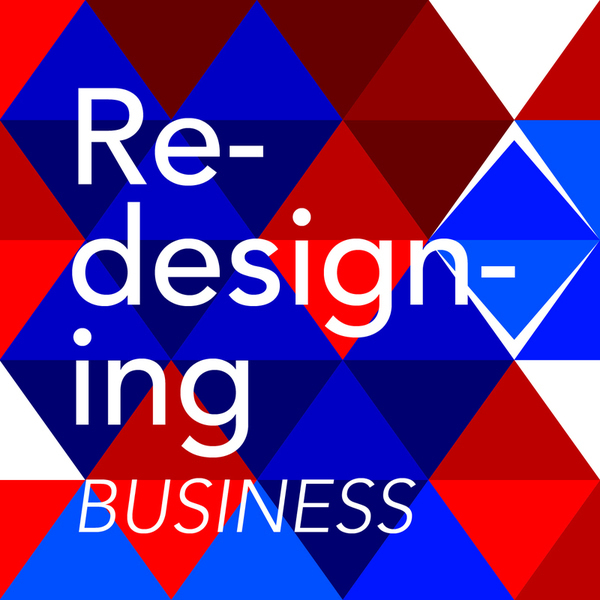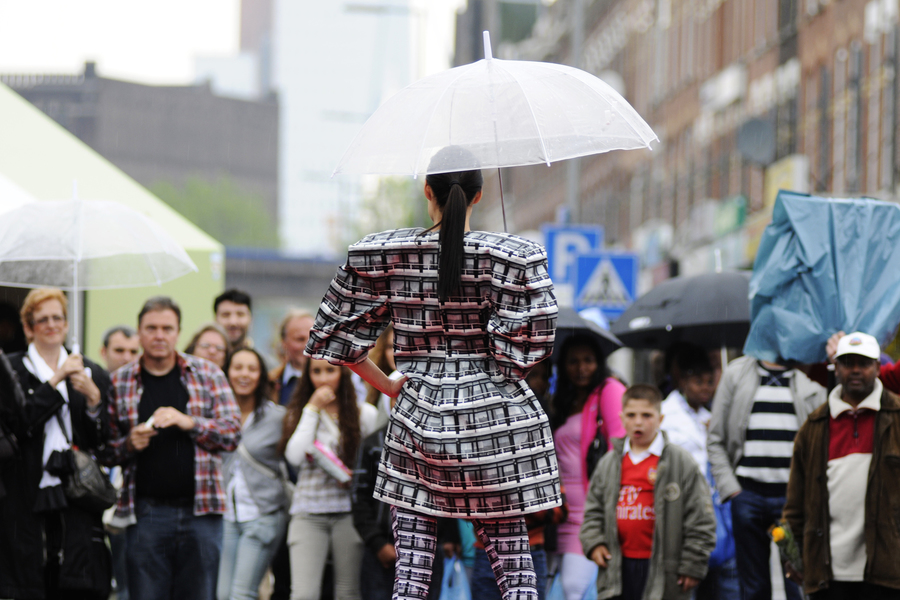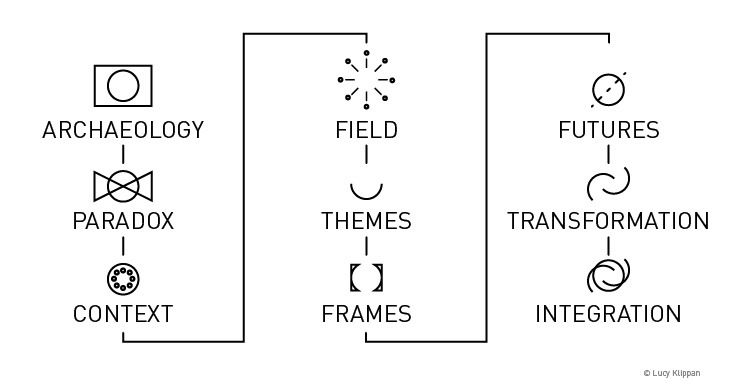Education
Introduction
Author: Sikko Cleveringa
Empowering tomorrow's gamechangers
Dear reader, Beyond Social is an international and collaborative research and publishing platform on social art and design. It connects professionals and students from different fields of expertise. It is a platform for sharing knowledge, projects, visions, opinions, experiments and insights. The platform is powered by WdKA lecturers, students, alumni and partners in society. We invite you to join us. Together we can further develop our art and design education, our understanding of socially relevant themes and practices, and the connection between these two fields. The second edition of Beyond Social focuses on educating artists and designers in social practices. Why 'game changers'? Which game and what outcomes are we aiming for? Who should be engaged in this game? How can we further improve and intensify the connection between our educational activities and contemporary (alternative) cultural, social and economic developments? We invite you to join in this inquiry.
Guest editor and curator
I welcome you here as the guest editor and curator of the July 2016 edition of the Beyond Social magazine and event, and also as the interim coordinator of the Social Practices department of the Willem de Kooning Academy for Fine Arts and Design in Rotterdam (WdKA). I have been asked to coordinate and optimise the curriculum of the Social Practices profile at the WdKA, as well as the related Beyond Social magazine and event, for a period of 3 to 6 months. In this context I am also looking ahead to the possible approval by Erasmus+ of the 'YesDesign' project for the period 2016-2018. The objectives of this international community of practice are quite similar to my current assignment. Partners in this project are: VIA Design of the University College of Aarhus (VIA, Denmark), Moholy-Nagy University of Art and Design in Budapest (MOME, Hungary) and the Centre for Social Design of the Maryland Institute College of the Arts in Baltimore (MICA, USA), as well as a number of independent expert organisations including my own company CAL-XL Advies. The WdKA is considered, in the Netherlands as well as on the international level, as a pioneer in the field of social art and design at the intersection of education and professional practices. Director Jeroen Chabot, course director Roger Teeuwen, Social Practices coordinator Iris Schutten and their teams of lecturers and supporting staff, all deserve credit for this. The motto 'creating pioneers' suits them well.
How to optimise and intensify joint learning
It is for me a pleasure and a honour to have been invited to join in this effort and to contribute to its further development. I feel that the WdKA is really on the right track, and that my role as a relative outsider is primarily in helping to optimise and intensify the joint learning process, particularly regarding the optimal connection between the educational programme and the professional practice. I am becoming increasingly aware of how the Beyond Social magazine and event could provide an excellent platform for this development. The current edition can be understood as a first outline of why and how this could work. I will begin my outline with a short reflection on education in the field of art and design in social practices, before explaining how I propose to explore this educational practice in the context of the Beyond Social magazine and event.
Education of art and design in social practices
Why art and design in social practices? – Themes
Social art and design is about transitions in society, moral leadership, and (proposing) how to change the rules of the game. The motto 'empowering tomorrow's game changers' has a double meaning: the ultimate game changers, our heroes, are the stakeholders in society with whom we work – such as, in the case of the YesDesign project, youth in underprivileged communities in Bospolder-Tussendijken, and the local social partners with whom they can make a difference. Our primary game changers, however, are our own students and alumni; we see it as our mission to prepare them for a role in which they can help these pioneers in society position themselves. After all, diversity, sustainability, empowerment and democratisation are all important themes in Rotterdam as well as other European cities.
How does it work? – Methods
Our society is changing rapidly; it's not enough to simply use and reproduce the culture of yesterday. Art can be understood as a laboratory for the production of culture which fits the society of today and tomorrow. The specific quality of the artist in this process is rooted in strongly developed right-brain qualities (dealing with intuition, imagination, uncertainty, etc.) and the ability to visualise (not-yet-existent) objects, data, meanings and ideas (Sullivan). Important methodological steps in this process of artistic research are to explore, to analyse, to reframe, to create and to sell/share.
Who do we need? – Community of practice
A successful synergy between education and practice requires the following: on one hand we need students, alumni and artist educators with a sense of social engagement and with the (potential) artistic research competences of a game changer. On the other had we need social partners and clients who also wish to make a difference in relation to these themes, and who are ready to accept that any substantial change in society will have to start within their own organisation (and not only within their client groups). Most importantly however, we need a mixed community of practice of artists, designers, citizens and other stakeholders in society who are willing and able to engage in a long-term learning process of how to best optimise the curriculum as well as practices in society.
What is the output and impact we expect? – Quality management
A successful social art and design intervention allows for the creation of new images or narratives; new connections between people, organisations or things; and new competences, on the level of individuals as well as institutions. (In Dutch: verbeelding, verbinding, vermogens.) The expected outcome/impact is that participants will be able to increase their influence on their personal development, on their social and physical environment, and on the public domain. This will turn have an impact on (alternative) cultural, social and economic developments within society. In order to be able to discuss and learn about these mechanisms, outcomes and impacts (and to 'sell' and share them) we need to be able to measure and document what we are doing; thus some kind of quality management system is required.
Framework for curriculum development
Curriculum development should thus focus on relevant themes, methods, communities of practice and quality management for game changers. For this purpose I have developed an experimental framework, structured as a matrix of four themes and five sets of methods. This framework is presented below. The framework was inspired by the current themes and methods of the WdKA's four specialisations in the curriculum of Social Practices: Cultural Diversity, Sustainability, Gamification and Open Design. These specialisations in fact also feature – consciously or coincidentally – these same combinations of themes and methods. The grey boxes indicate approximately where these specialisations could be positioned within this framework (the fifth grey box, 'Sell Empowerment', will be addressed later in this text).
(*)The specialisation Cultural Diversity is related to embedded research and other exploratory methods. It is, and can be, about all kinds of diversity (not only cultural but also social and economic);
(*)The specialisation Sustainability is related to system analysis and other analytical methods. In fact it is predominantly about material flows ('blue economy'), but social and cultural systems can be mapped as well ('sustainism');
(*)The specialisation Gamification is related to game-changing methods and the reframing of 'wicked problems'. In fact it is predominantly about behavioural change of specific target groups. Potentially it is also about a renegotiation of power between citizens and institutions, by challenging the current rules of the game and playfully proposing and testing new ones;
(*)The specialisation Open Design is approximately related to democratisation and product design. Potentially this part of the matrix is also about what design can achieve in light of the current (possibly failing) decentralisation and democratisation in our disoriented nation states.
(*)The set of methods related to selling and/or sharing is currently not organised as a distinct specialisation within the curriculum, nor is it connected to a specific theme in society. However, it obviously deserves attention in all specialisations. In fact the WdKA's Hybrid Publishing Practice, as well as the Social Practices department's Beyond Social magazine and events, are potentially important platforms for 'selling' and sharing our art and design methods, products and impact. In this framework I consider this selling and sharing as a form of internal and external positioning and thus empowerment of both our students and our partners in society.
Please consider this framework as a first attempt by an outsider to achieve a clearer understanding of a sophisticated programme with many contributors and a rich legacy. As such, it is absolutely open for discussion and improvements. A first check however with lecturers and students has given me the impression that my observations and proposition are not totally nuts. The model may even be less random than it seems. Our keynote speaker at the July 8 event, Dr Marina Meeuwisse, will present a theoretical model for Art, Design and Social Change, inspired by Graeme Sullivan's 'Art Practice as Research' (2005), which bears a striking resemblance to my own experimental framework (we will publish more on this subject at a later date). This gave me the courage to share my experimental framework with you, the reader, and to use it as a guideline in editing the Beyond Social magazine and curating the July 8, 2016 edition of the Beyond Social event.
Beyond Social magazine and event
In editing the magazine and curating the event of July 2016, we used – on an experimental basis – the above framework as the guiding principle for positioning content.
In the magazine, you can select the themes and methods of the matrix as topics at the top of the page, and then go on to find the relevant selection. Currently, not all combinations result in a sufficient number of hits, however we hope this will encourage users and readers to add their own contributions. We have also formulated follow-up questions at the end of each article, with the goal of stimulating further interaction. I consider the content of the July edition as a starting point, and I intend to actively motivate lecturers, students and external partners to 'complete the picture' and/or to challenge it during the upcoming six months. By late 2016 we should be able to evaluate the results of this exercise in terms of learning as well as internal and external positioning.
During the final examination event 'WdKA Finals 2016', we will be experimenting with a classification of the examination work of all students in the graduation exhibition. At the Beyond Social event, we will present the framework and invite the audience to experiment with it by walking thematic and methodological routes through the exhibition. Each route will consist of 3 to 4 works. We also ask the audience to give feedback at the end of the route. The routes should also be available as an application on mobile phones, allowing interested visitors to explore various routes, also during the weekend at the graduation exhibition after the event. In the autumn of 2016 we will evaluate this experiment and decide whether and how this framework – or an adapted version of it – could also be of use for curriculum development.
The next steps
Possible next steps for making Beyond Social an inspirational platform for the internal and external positioning of social art and design include:
(*)Install and facilitate an editorial board of students, lecturers and external partners, and give them co-ownership of this platform and this learning function;
(*)Improve the platform function, making it more personal and interactive, and encouraging more peer reviews and joint research and development;
(*)Position Beyond Design as an important learning platform for communities of practice related to long-term partnerships on the WdKA's agenda (including YesDesign if it receives funding);
(*)Integrate Beyond Social in the curriculum – give students as part of their study the assignment to publish about their projects and/or to react on contributions of others and on questions of the editorial board;
(*)Invite partner institutions such as MOME to do the same;
(*)Include a category 'methods' in the wiki system, and invite internal and external experts to write and co-write practical guidelines for appropriate methodologies in the context of the framework (5 sets of methodologies, possibly also to be redefined);
(*)Further develop the Hybrid Publishing function, for example to facilitate co-creation in the further development, publication and dissemination of inspiring contributions;
(*)Welcome other relevant suggestions and initiatives. You are invited to join us!
Selected articles
6 December 2017 16:07:24 by Manetta
25 October 2018 22:21:41 by Rümeysa Önal
12 March 2018 22:08:45 by Manetta
29 October 2018 13:43:55 by Rümeysa Önal
6 December 2017 16:05:39 by Manetta
30 October 2018 20:25:25 by Rümeysa Önal
6 December 2017 15:22:25 by Manetta
25 October 2018 09:49:25 by Rümeysa Önal
25 October 2018 10:12:41 by Rümeysa Önal
25 October 2018 22:01:59 by Rümeysa Önal
6 December 2017 15:21:33 by Manetta
6 December 2017 15:20:53 by Manetta
28 October 2018 20:22:56 by Rümeysa Önal
6 December 2017 15:10:29 by Manetta
29 October 2018 14:46:21 by Rümeysa Önal
2 November 2018 13:01:12 by Manetta
2 November 2018 13:01:05 by Manetta
2 November 2018 13:00:55 by Manetta
23 November 2017 13:01:50 by Iris Schutten
30 October 2018 20:24:26 by Rümeysa Önal
30 October 2018 20:29:50 by Rümeysa Önal
6 December 2017 15:16:12 by Manetta
2 November 2018 13:01:26 by Manetta
23 November 2017 13:02:29 by Iris Schutten
27 October 2018 18:14:43 by Rümeysa Önal
25 October 2017 11:20:06 by Bruno Setola
